The A-66 Highway known as Autovía de la Silver Route allows you to travel from north to south by car the western part of Spain, starting in Gijón to get to Seville along 809 kilometers. It is the second longest motorway in Spain after the Autovía del Mediterráneo (A-7), and it offers a varied compendium of nature, culture and enogastronomy of different regions of Spain.
Not to be confused with the Silver Route a Roman road that covered the route from Emerita Augusta o Merida (Badajoz) to Asturica Augusta o Astorga (León) and through which today pilgrims on pilgrimage from the south of Spain pass on foot, although they only have in common the name and some stretches and cities. The main difference between the two is that The Silver Route is designed to be travelled by motorbike.either by car, motorbike or even motorhome. Shall we start engines?
Where do we drive along the Silver Route?
Our journey through the Silver Route by car starts in the north of the peninsula and will take us will take us to four autonomous communities and seven provinces.. We start in Asturias and move on to Castilla y León through the provinces of León, Zamora and Salamanca. Then it connects with Extremadura, where it passes through Cáceres and Badajoz, to finally reach Andalusia through the province of Seville, in whose capital this route ends.
There will be many towns and cities that you can visit in the Silver Routeand in this article we will see the main cities that you should not omit in your adventure. This route allows you to soak up a lot of culture and history with all the heritage offered by its cities and towns, nature with varied and unforgettable landscapes, and of course, all the enogastronomy typical of the different regions.
Asturias
In the 76 kilometers that run in the Principality of Asturias the Autonomous Community with the least number of kilometres of the Silver RouteThere are several places to visit, and we are going to introduce you to three of them: Gijón, Oviedo y Mieres.
Gijón
In addition to enjoying its famous San Lorenzo Beach, we can immerse ourselves in more than 2,000 years of Roman culture by visiting the Archaeological Park of Campa de Torres, dating from 490 BC, the Roman Villa of Veranes or the thermal baths of Campo Valdés, a building from the 1st century AD. Gijón more modern with its beautiful fishing district of Cimavilla. Other attractions are the Revillagigedo Palace and the collegiate church of San Juan Bautista, dating from the eighteenth century, the birthplace of Jovellanos, the Palace of Jove Huergo and the chapel of the Trinity await us. Before leaving, we can contemplate the sculpture of Eduardo Chillida, “In Praise of the Horizon”, located in the Paseo de San Lorenzo, as well as visit the Aquarium and the Botanical Garden as a finishing touch to our stay in Gijón. You will surely see pilgrims, as the pilgrimage route passes through this city, The Camino de Santiago of the North.
Oviedo
In the capital of Asturias there is a lot to visit, since Oviedo was a very important protagonist in the history of Spain and a key point in the birth of the Camino de Santiago because from Leopoldo Alas Clarín’s “Vetusta” the “Primitive Camino de Santiago” considered the first the first of the Jacobean routes. First of all, we must not miss a visit to the Cathedral of El Salvador the starting point of the Primitive Way and the end point of the Way of El Salvador which was born in León. It contains the Holy Chamber, with the Victoria Cross, symbol of the Principality of Asturias, and the Cross of the Angels, symbol of the city. In the Plaza de Fontán you should stop by its market, which offers all kinds of fresh produce and is the nerve centre of the city. Of course, stroll down Calle Manuel Pedregal, or what is the same, the city’s wine street, where the people of Oviedo enjoy all the splendour of its enogastronomy.
Mieres
Mieres is located in a bucolic natural landscape witness of a strong mining tradition.In fact, in the Plaza Paz the locals pay homage to their miners with a well-deserved Monument to the Miner. A few steps away is the Palace of the Marquis of Camposagrado, where you can see one of the best collections of paintings in Asturias, in addition to visiting a building declared of Cultural Interest. In the historic centre of the city you should not miss the Jovellanos Park and the Plaza del Requexu, where the Monumento al Escanciador pays tribute to the culture of Asturian cider; after a good walk, what better than sitting on one of its terraces and tasting a good “sidrina” well poured. Pote asturiano (Asturian stew) or fabada de Asturias (Asturian bean stew) complete the experience of the enogastronomy of the city.
What to see in Castilla y León?
The Silver Route takes us through the lands of Castilla y León along 330 kilometres, being the Autonomous Community of Castilla y León the one with the longest distance. They will be large and stately cities such as Leon, Zamora y Salamanca those that we are going to present to you, although there are many more villages and regions that you can visit during this adventure in the old Castile.
Leon
This city is pure history and a great place to spend a weekend a city that also has a great Jacobean tradition as it is the route of the French Camino de Santiago. There are so many things it hides León that you have to discover them: the medieval wall, the Roman crypts, the provincial heritage of the Museum of Leon the impressive and beautiful Cathedral of Santa María de Regla of León Gothic from the 13th century and with colourful stained glass windows in which the rose windows stand out. Gaudi’s Casa Botines Museum the Palacio de los Guzmanes, the Palacio del Conde Luna, the Plaza Mayor, among many other places. Of course, the The Humid Quarter in its old area offers you the best enogastronomy of the city.
Zamora
From Zamora we will start to coincide with the Silver Route Jacobean. This city has a medieval old town with viewpoints over the Douro river that will leave us wonderful pictures at sunset. At Zamora it is necessary to emphasize the Cathedral, the oldest and smallest of all the Autonomous Community; its architectonic style enters inside of the Romanesque of the Duerowith a dome inspired by the Byzantine ones. Many other Romanesque churches can be visited, and within the civil architecture it is worth mentioning the 11th century castle. The cabins of Sayago, the Roman mosaics preserved in the Museum of Zamora, the fountains and tin piles in Almaraz, the funerary stele and the Roman boar in Muelas del Pan and the funerary stele in Villalcampo are, besides, other outstanding Roman remains in this area. Of course, we must not forget to savour its enogastronomy, as we are on the banks of the river Duero.
Salamanca
We can’t fail to stop in this beautiful city where culture, history and student hustle and bustle come together. Salamanca also starring in the Silver Route, contains many monuments that we could see, but we will stay with its imposing Plaza Mayor, the Casa de las Conchas, the two cathedrals (the new and the old one), the Spain’s oldest university, where we will look for its famous frog.The Lis House, the Clerecía or the Convent of San Esteban. In the capital of Charra you must not forget to follow in the footsteps of Saint Teresa of Jesus, as well as enjoying its enogastronomy where the suckling pig is the king.
What to see in Extremadura?
With 300 kilometers within the Silver Route we find towns and villages where the Roman past is still very much alive. Mérida is, without a doubt, the epicentre of this section in which we follow the Silver Route but along the way we will find many towns and cities that will excite us, such as Plasencia, Cáceres and Zafra, among many others.
Plasencia
A city rich in nature for the many green areas with a great diversity of birds that we will find in Plasencia such as Los Pinos Park. The old and new cathedrals take us on a journey that begins in the former in the 13th century and ends in the latter in the 16th century. The Epikscopal Palace, the Medieval Interpretation Centre, the Palace of Mirabel or the Palace of Monroy and several of its churches, such as San Nicolás, San Martín or the Hermitage of Nuestra Señora del Puerto, give us the chance to see history and culture in equal parts. Be amazed by its imposing Roman aqueduct while you delight yourself with the food and wine products from Extremadura.
Cáceres
One of the Spanish cities in which we will enjoy the cultural mix that the different cultural mix that the different civilizations have given it over the centuries.. Founded by the Romans, in the old quarter of Cáceres we are going to see the Gothic and Renaissance styles represented, with the Moorish wall surrounding the city and its thirty towers with the storks as spectators of luxury. It is worth seeing the Tower of Bujaco, the Museum of Cáceres the Gothic Cathedral of Santa María and the Palace of the Golfines de Abajo, a very special fortress-house. As for your enogastronomybe sure to try the “migas extremeñas” (fried breadcrumbs) prepared in Cáceres.
Merida
We arrive to the emblematic city of this Silver Route, Emerita Augusta. A very important enclave of the Via de la Plata in it we find we find many ‘meridas’ in one: the Roman, the Visigothic, the Arab, the medieval and the present one. From the Merida the famous theatre and amphitheatre, the circus, the aqueduct, the temple of Diana, the Arch of Trajan, thermal baths and the National Museum of Roman Art. The basilica of Santa Eulalia or the Xenodoquio represent the Visigothic Mérida while the Arab is evident with the Alcazaba. Merida a city to get lost in each of its streets and delight with the flavors of its enogastronomyWe recommend you to spend a couple of days there.
Zafra
Around Zafra we will find several Roman remains, while many others will be integrated in the buildings of the village itself. Impressive is the Palace of the Dukes of Feria, from the fifteenth century, or the collegiate church of La Candelaria where we will find an exceptional collection of Zurbarán’s paintings.. The Grande and Chica squares united by the Arquillo del Pan, the wall gate and its churches, hermitages and museums make of Zafra an essential stop. Stopping point at the Via de la Plata in terms of its enogastronomy it is necessary to emphasize the Gastronomic Days of the Golden Age, which are celebrated during the festivities “From the Moon to the Fire”.
What to see in Andalusia?
We arrive at Andalusian lands to cover the last stretch of 115 kilometres in which two cities await us, Carmona y Seville. In both of them we will continue to enjoy the Roman presence in this Silver Route and we will enjoy its constructions, many of which have crossed our frontiers in fame.
Carmona
The main axis of this town is the Via Augusta. where you can also enjoy the necropolis, a complex in which the tombs of the Elephant and Servilia stand out. Its amphitheatre from the 1st century B.C., the Plaza Arriba which was part of the Roman forum, several mosaics in the Town Hall, the door of Cordoba or the Roman Bridge are other attractions of the city. Carmona. Santa Clara, a Mudejar convent from the 16th century and the church of San Pedro with the “Giraldilla” stand out. Enjoy your enogastronomy andalusian food after a good visit is the best plan you can do in your stop in Carmona a city of cinema.
Seville
We arrive at the end of our particular Silver Route and there is no better end than to finish in Seville. There, from the Roman period, which has led us to the capital of Seville, we find numerous vestiges. We highlight the Casa Pilatos, the Palace of Lebrija and the Palace of Dueñas. You can’t miss the Roman stones of La Giralda, the columns of the Alameda de Hércules, the temple in Calle Mármoles and the remains of the Caños de Carmona aqueduct. In Seville we find the Cathedral and the Giralda, the Real Alcazar and the Archivo de Indias, three monuments declared World Heritage Sites by UNESCO. In addition to this, a ride through the city, better and more comfortable in a horse-drawn carriage, will take us through its streets full of character. to the Real Maestranza, the Torre del Oro or the Plaza de España. An end of the journey with the Guadalquivir as a silent witness of the passage of civilizations through this beautiful Andalusian city, the beginning of the Silver Route. As for your enogastronomyif you coincide with the mythical Easter Week at Seville. If you are in Seville, do not miss the chickpeas with spinach, and if you dare with gastropods, try the famous “cabrillas”; otherwise, be a real Sevillian tasting a good sirloin steak with whiskey and a cold beer.
Practical information
We have talked about the A66, but sometimes it includes small stretches of other motorways or (toll) motorways.
Finally, we provide you with a file that you can download with all the information about all the information of each of the cities and towns of this Silver Route. Its festivals, typical food and shopping you can do. As if that wasn’t enough, we leave you a direct link to the map of the Silver Route with the cities and towns that we can visit and their tourist offices.
We hope that with this article you will be able to drive around with your car this route that should not envy anything to the famous American Route 66. Contrast of landscapes and naturehistory and diverse layers of culture. cultureand a very rich and unique enogastronomy are the guarantee of a trip for which, at least, a week is necessary, a week is necessaryalthough it is always better to dedicate more days to enjoy it 100%. Ah! And don’t forget, be careful on the road, driver friend.

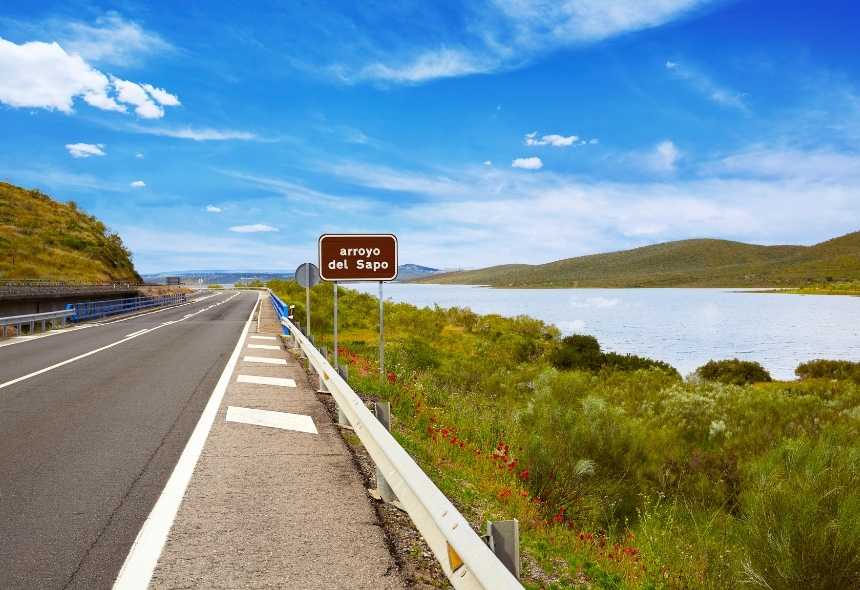
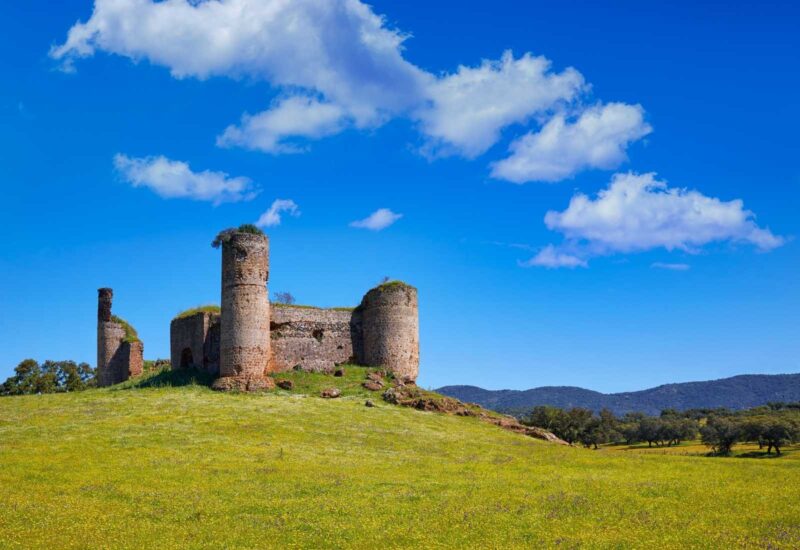
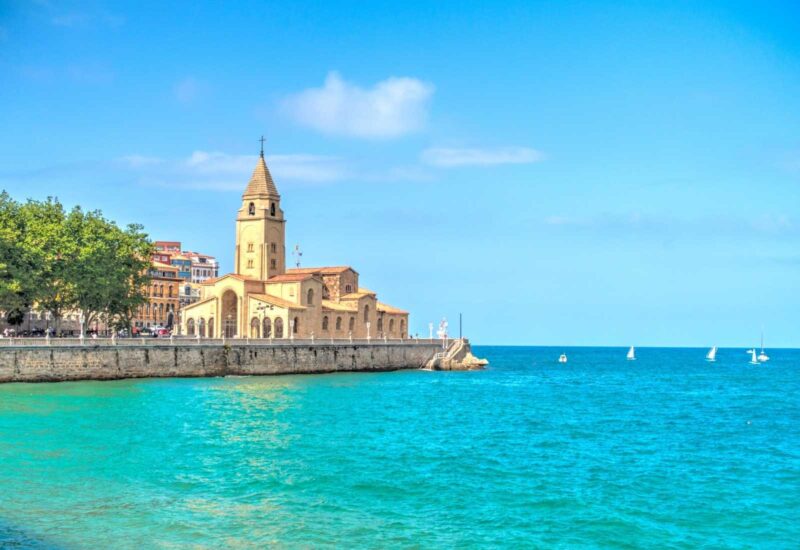
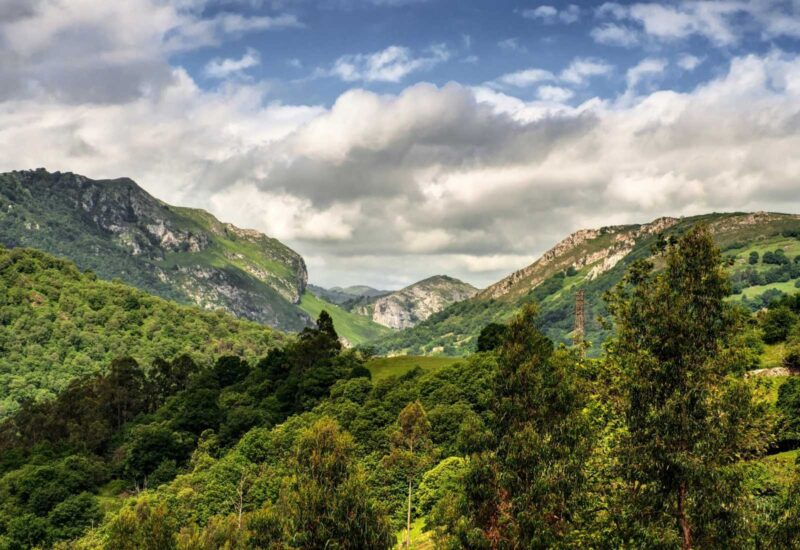
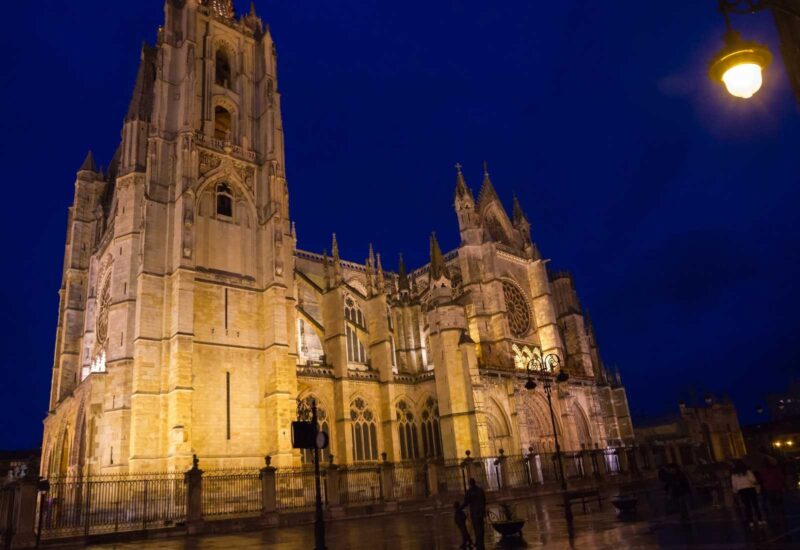
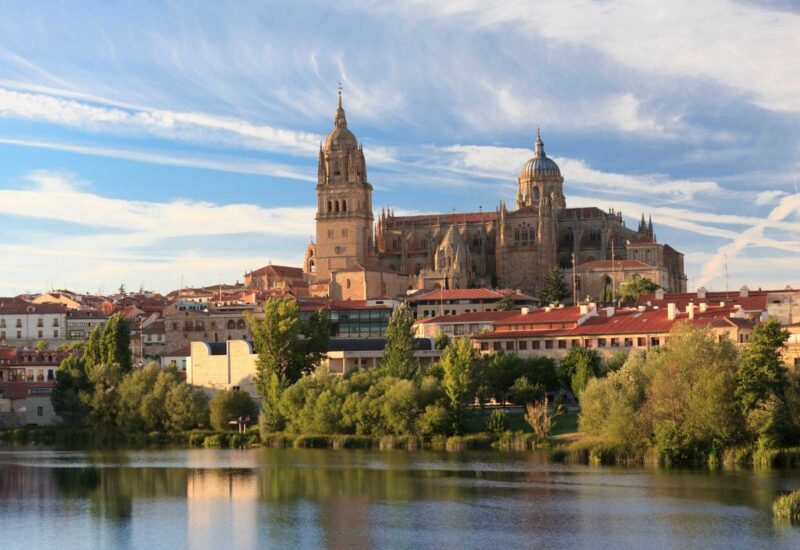
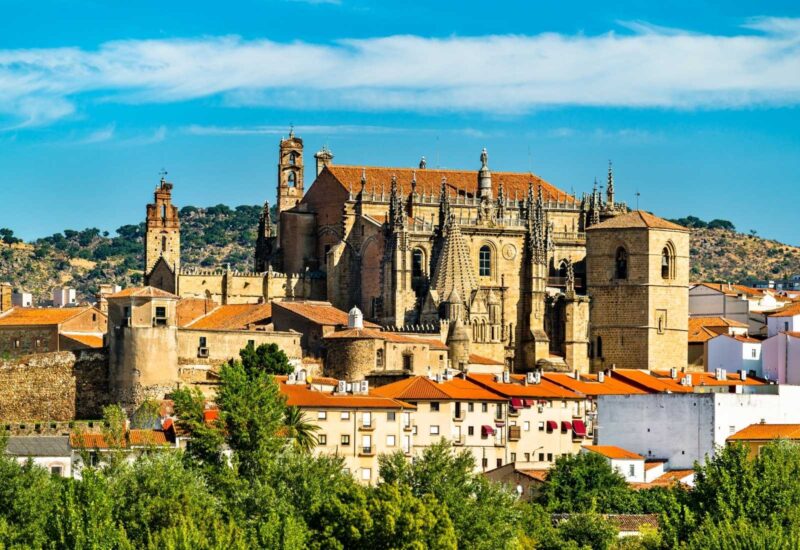
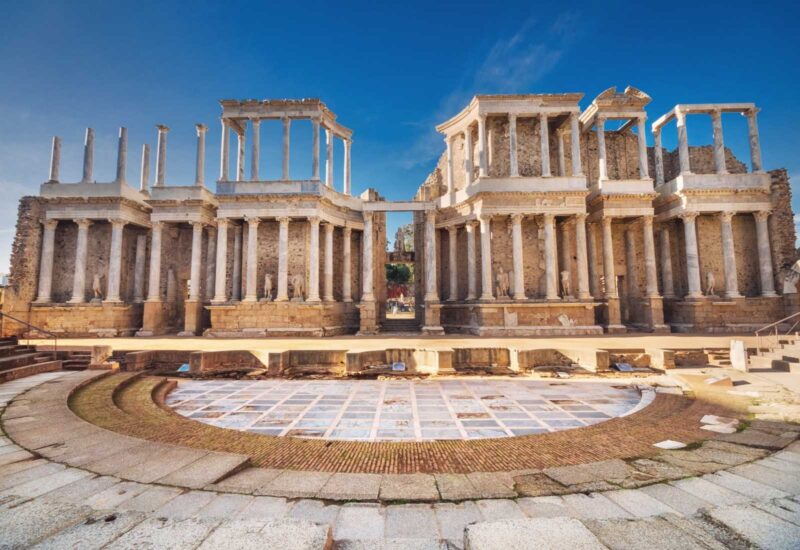
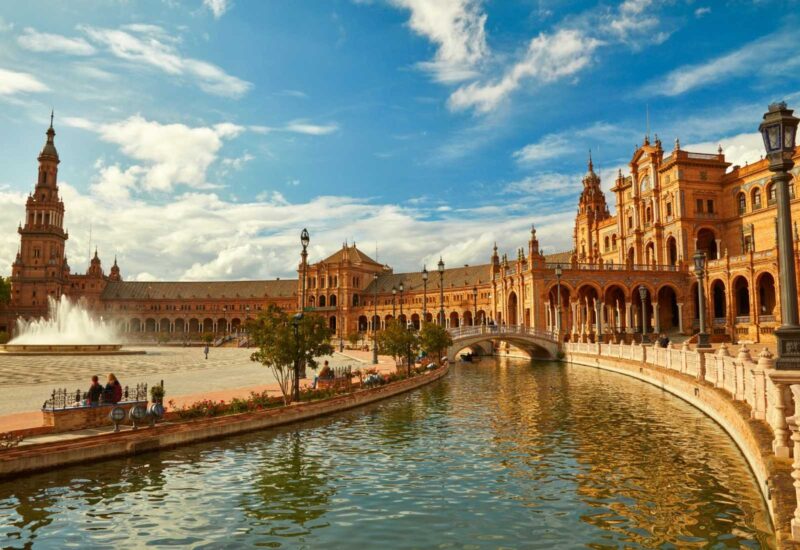










Hi,
Thank you so much for your reply.
All best,
Belay
Hi there,
Do you have suggested hiking trails and bike trails along the Silver Route since we plan to stay at least five days in each province to savor the local gastronomy and nature?
Thank you.
Belay
Hello Belay
You can see in more detail each stage and each village of the Vía de la Plata on this page.
Inside you will find places to visit, what to see in these places and, in the most recognized places, also what to eat.